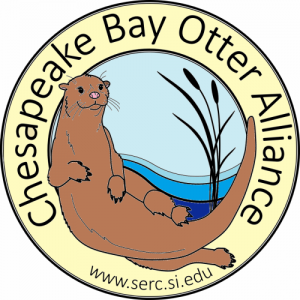Research ProjectChesapeake Bay Otter Alliance
Chesapeake Bay Otter Alliance
Affiliated Labs
Project Goal
To promote the North American river otter (Lontra canadensis) as a a sentinel species for ecosystem and public health and a flagship species for coastal conservation.
Description
As the number of people living in coastal zones continues to increase, we need new approaches to conservation and public health efforts to protect the wildlife and humans who live in this environment. Our goal is to use a charismatic semi-aquatic mammal to introduce and promote conservation and health-related issues across the Chesapeake Bay.

Despite being a little elusive and primarily nocturnal, North American river otters are playful, social animals that are also top predators in the Chesapeake Bay. Along the shore they use special places called “latrines” to defecate, urinate, eat and, most importantly, socialize. Thus, these latrines provide non-invasive access to study river otter behavior, diet, health, and overall ecology. As a sentinel species, their status as an apex predator means that their scat can provide information about predator-prey dynamics, prey diversity, and food web interactions, including parasites that move through the food web (i.e., digenetic trematodes). Second, they host multiple parasites that infect both people and wildlife (e.g., Giardia spp., Toxoplasma gondii) and are sensitive to several environmental toxins, including many that are hazardous to human health (e.g., mercury, PCBs). Lastly, they are an accessible species for scientists to study. Researchers can identify latrines along the shoreline, then set up game cameras and collect scat from these locations to generate extensive data on river otter biology and ecology without causing any harm to the animals. These characteristics make river otters a compelling species for education, research, and conservation activities.
The Chesapeake Bay Otter Alliance (CBOA) includes organizations across the National Capital Region, including the Smithsonian Institution, the Anacostia Watershed Society, the Rivanna Conservation Alliance, DOEE, EJJI, and the National Aquarium. We have worked in collaboration with many state, county, and regional parks.
In order to learn more about river otter ecology across the Chesapeake Bay, we need your help to find these semi-elusive, mostly nocturnal animals. If you happen to spot a river otter, or signs of a river otter (e.g., slides, tracks, scat) while exploring anywhere in the Chesapeake Bay watershed, please take a moment to report the sighting here: https://www.inaturalist.org/projects/chesapeake-bay-otter-alliance-survey
Glossary:
Flagship species: a species that is selected to be a symbol for a defined habitat, ecosystem, or environmental cause.
Sentinel species: a species used to detect risks to humans by providing advance warning of a health threat



